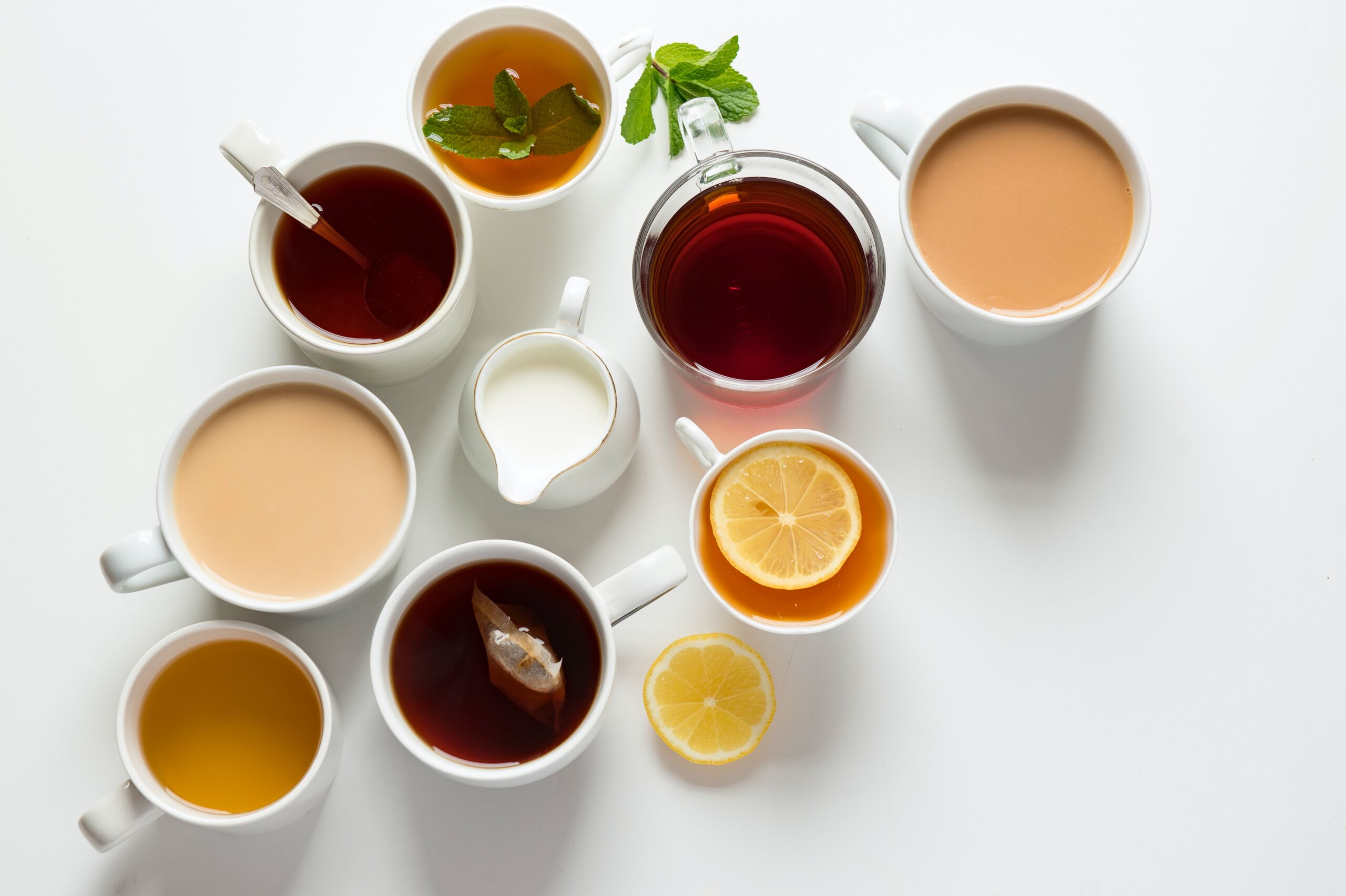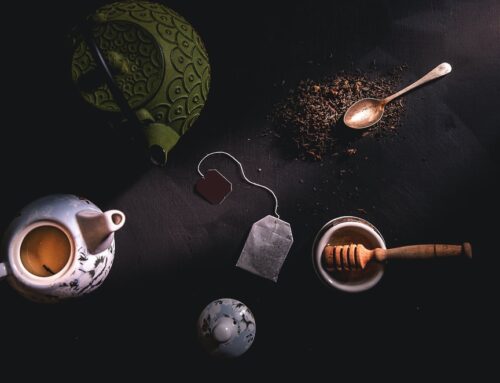
The types of “real tea” are: green, black, yellow, white, oolong and pu-erh. All are obtained from a plant called Camelia Senensis. All the so-called fruit and herbal teas are infusions.
Green tea is obtained from the Camelia Sinensis‘ leaves. This process does not include fermentation. Just after picking and selecting the right leaves, they are dried. Green tea conserves a lot of valuable ingredients, i.e. polyphenols, microelements (such as calcium, fluorine, iron, potassium, sodium and zinc), vitamins A, B1,B2, C, E, K, caffeine, and essential oils. The general rule is to use a teaspoon of tea per cup. The brewing temperature should be around 70-80ºC.
Black tea is the most widespread tea in the West. Interestingly, in Japan, China, Korea and other Asiatic countries it is called red tea because the colour it gives after brewing. By contrast, in the West culture, as well as in Russia, the name black tea refers to the colour of the leaves. To produce black tea, leaves are fully fermented, i. e. being wilted, twisted, fermented, dried and sorted. In effect, the tea not only has a different taste than the green tea, but also a different chemical composition.
White tea is obtained from the Camelia Sinensis’ buds and young leaves which are picked up and dried in the early spring. The tea does not undergo fermentation and the leaves are not formed: they preserve their original shape. Once brewed in 70-80ºC, the infusion becomes yellowish and grassish green. It presents a delicate taste with no bitterness.
Yellow tea is very rare and expensive. It refers to the Chinese huángchá (黄茶; 黃茶) and Corean hwangcha (황차; 黃茶). Yellow tea is often put in the same category as green tea because of their delicate oxidation. Once brewed in 70-80ºC, the infusion becomes strawish yellow. It is bittersweet and has an intense smell.
Oolong tea (in Chinese: 烏龍 [wūlóng]) is a type of semi-fermented tea. It is also called dark green, blue-green or blue sapphire tea. The oolong tea can be recognised thanks to the colour of a brewed leaf. The darker edges resemble a black tea leaf. The rest of the leaf looks like a green tea leaf.
There are various types of oolong tea, depending on the level of oxidation. It is assumed that the level of oxidation may lie between 5% and 85% (the opinions differ depending on the source). The oolong tea may be brewed several times (1 teaspoon per cup, 85-90ºC), provided that each brewing should be longer.
Pu-erh tea (in Chinese普洱茶, pǔ’ěr chá), red tea in Europe or black tea in Asia, has been grown in China for over 1700 years. The name of the tea comes from its homeland, region Pu’er in the province Junnan in the southern China. This tea is like a great wine and it ages. That is why it is called post-fermented or maturing tea. Its taste and aroma is earthy. It is brewed with freshly boiled water at a temperature of about 90 ºC. The first water should be drained. This will clean and open the leaves. The pu-erh tea can be brewed several times.



